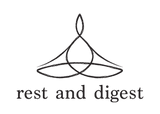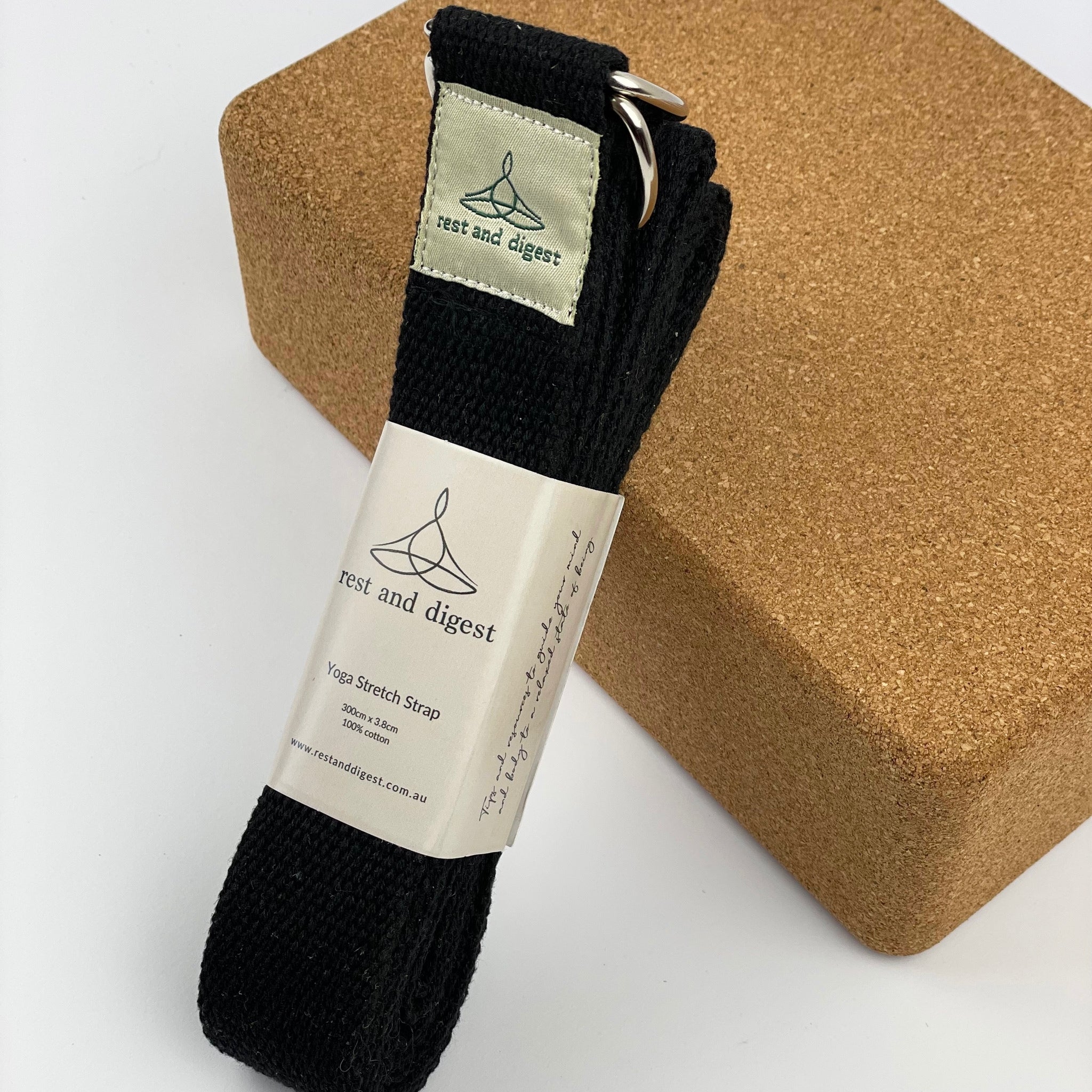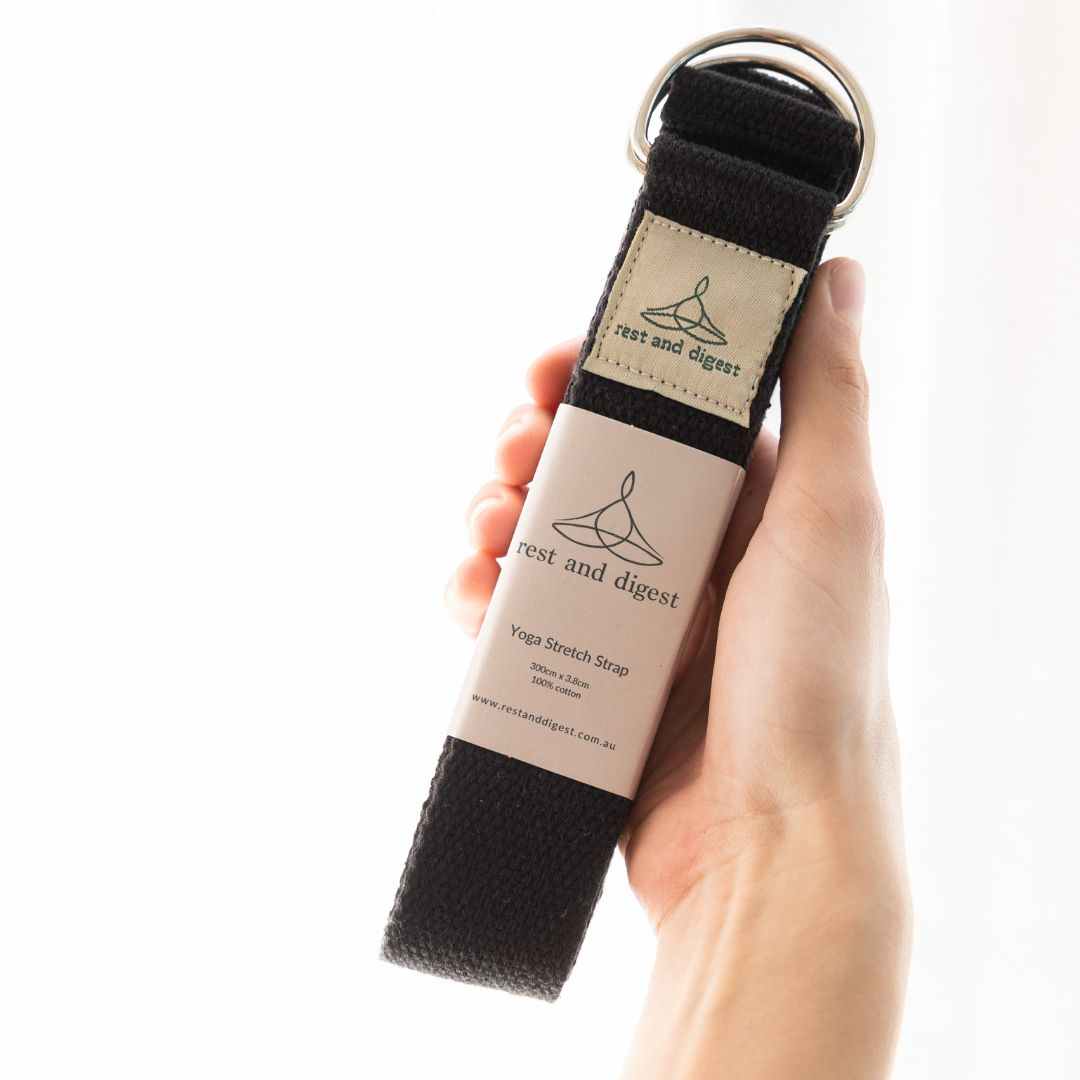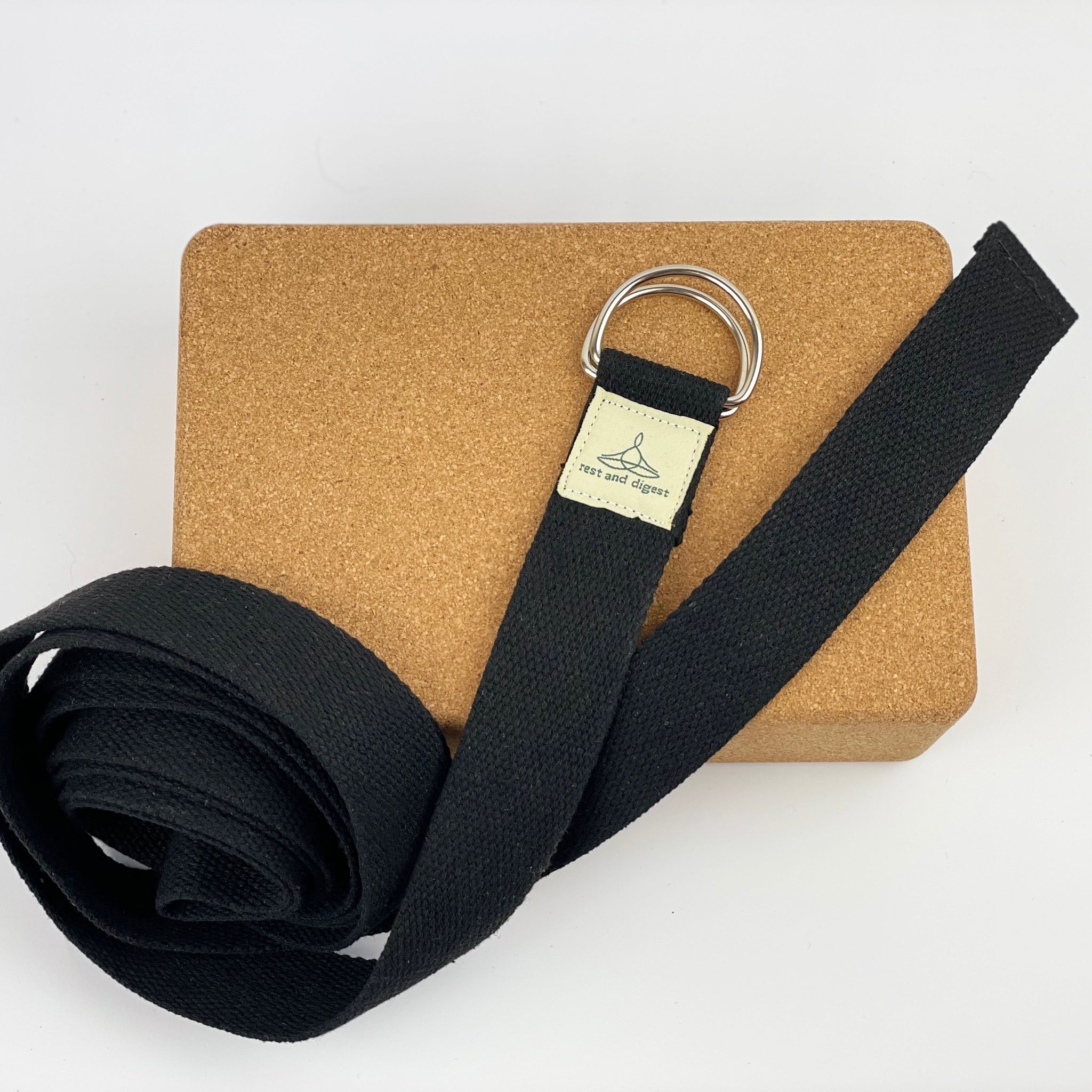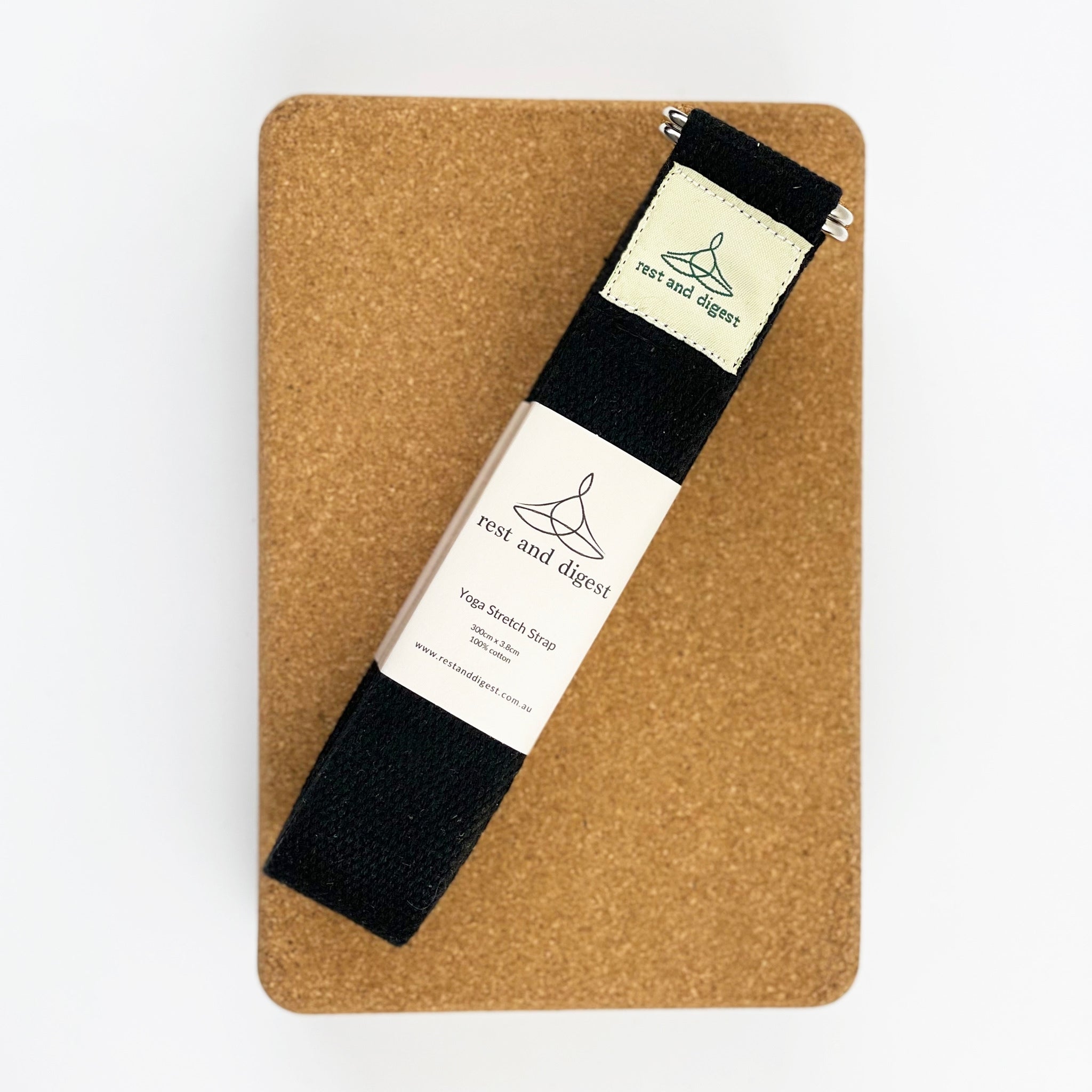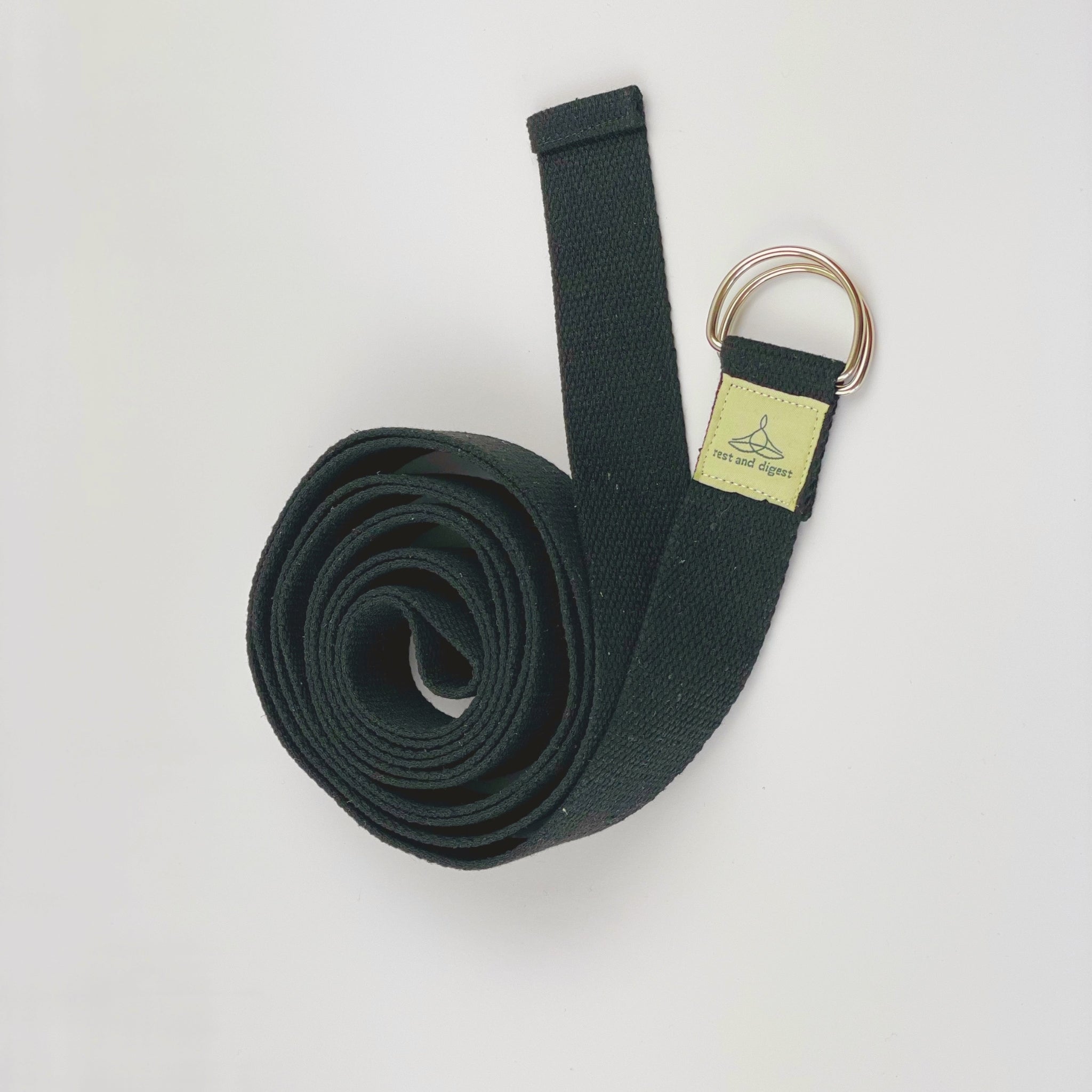The Guide to Using Yoga Straps
Yoga, which is an age-old practice combining physical postures, breath control, and meditation has grown in global popularity. A key aspect of yoga is achieving appropriate alignment and posture in different asanas (poses). However, several practitioners may have stiff muscles or limited flexibility that restrict them from fully realising the benefits of yoga poses. This is where yoga straps are necessary to assist the yogis. They add support and assistance for people with all skills.
What Is It?
Made out of cotton, nylon, or hemp, they can be described as flexible bands designed to provide length, support, and stability during various yoga poses. These devices prove helpful, especially among those with inflexibility or those recovering from illnesses. They help participants achieve better posture by extending their reach or maintaining good alignment while doing their stretches.
Types Of Stretch Straps
Yoga straps are versatile tools designed to support a variety of poses. Gaining knowledge about these different types of straps will enable you to make an informed choice on what to use depending on your needs as a practitioner. Here are the main types:
- D-Ring Straps: The heavy-duty metal D-ring buckle in this strap allows secure looping and adjustment. It is much more flexible than any other strap; as it offers diverse lengths for supporting various positions during yoga practices.
- Cinch Buckle Straps: Cinch buckle straps like the D-ring ones also use plastic cinch buckles for simple adjustments when needed. These offer fast customization of length making them lightweight and ideal for people who need to travel frequently when engaging in their practices.
- No-Buckle Straps: The design is straightforward without buckles or fasteners that allow easy use. Mostly of less length, they are best suited for basic stretches and poses where only minimal adjustment is required.
- Elastic Straps: Made of elastic material that provides gentle resistance and support as you go on with your yoga practices. When used during restorative yoga or physical therapy, these will assist in slow stretching while also enabling the relaxation of the muscles.
Why Use A Strap?
There are numerous benefits from using straps in yoga practice for yogis at all levels:
- Enhancing Flexibility: For beginners or those having limited flexibility, the yoga straps act as a bridge between the hands and feet in a position like a seated forward bend (Paschimottanasana), thus enabling deeper stretches.
- Improving Alignment: In order to avoid injuries and get maximum impact out of postures proper alignment is essential in yoga. By supporting and extending, they help maintain alignment so that practitioners can refine their poses.
- Increasing Intensity of Stretches: You can use a strap to lengthen your reach thereby deepening the stretches. An example would be Utthita Hastha Pandangustanasana (Extended Hand-to-Big-Toe Pose), where a strap would allow for balance or posture.
- Helping with Difficult Poses:Make advanced poses such as King Pigeon Pose (Kapotasana) and Bound Angle Pose (Baddha Konasana); which require significant flexibility and strength more accessible by providing additional support and stability.
- Supporting Restorative Yoga: In restorative yoga, relaxing and gentle stretching are the main areas of focus. For instance, in a pose like the Supported Reclining Bound Angle Pose (Supta Badhdha Konasana), straps are used to help achieve deep relaxation and tension release.
A Guide To Using Straps For Your Yoga Practice
In yoga, straps are essential for practicing; they make it possible for you to reach poses with more ease and precision. Here are some tips on how to use them:
- Warm-Up: Before you begin stretching more deeply using a strap, gently warm up your body through stretches and movements.
- Choose the Right Length: Pick a strap length that will allow you to comfortably reach the buckle or D-ring once fully extended; adjust accordingly depending on different poses.
- Fasten Tightly: Make sure that the strap is properly attached by securing it around the part of your body where you wish to stretch so as not to slip off while in a pose.
- Engage Mindfully: While using the strap to support and deepen the stretch, maintain engagement in the muscles being stretched. Avoid overexertion or forcing the body into uncomfortable positions.
- Try It In Different Ways: Experiment with different strap placements to customise your stretch and target specific areas of tension or tightness.
- Breathe Deeply: Keep your focus on deep breaths going throughout all postures with the support of the strap, thereby relieving tension and calming your mood.
- Release without Strain: When releasing the strap, do so gradually and with control to prevent sudden movements or strain on the muscles, allowing for a smooth transition out of the pose.
Care
Just like any other yoga gadget, taking the right care of your yoga strap is important to ensure its sturdiness and hygiene. Here are some guidelines that will help you maintain your strap in top condition.
- Regular Cleaning: Depending on the fabric, you can machine wash cotton and nylon straps on a mild cycle with slight detergent. For fabricated from hemp or those with intricate designs, hand washing is probably more appropriate. Always air-dry your straps to prevent shrinkage or harm.
- Avoid Overstretching: While they are designed to be durable, overstretching them repeatedly beyond their ability can weaken the fibers and reduce their effectiveness. Use the strap within its intended range to preserve its elasticity and strength.
- Inspect for Wear and Tear: Regularly check your strap for symptoms of damage, including fraying or weakening of the buckles. If you note any harm, it’s best to replace the strap to avoid injuries during yoga practice.
- Store Properly: Keep it in a cool, dry area far from direct daylight whilst no longer in use. Rolling it up neatly after each session will help maintain its shape and prevent tangling.
Rest and Digest Extra Long Stretch Strap
Introducing the Rest and Digest yoga stretch strap; your way into a richer, deeper experience of yoga practice. This extra-long strap allows experienced yogis access to more advanced techniques at their convenience making this product suitable for those who want to increase flexibility safely, while still remaining comfortable enough even beginners who may find themselves struggling due to the inability to execute certain poses properly.
- Unmatched Length: With an impressive length of 3 metres (or approximately 175cm tall), this yoga stretch strap opens up a world of possibilities for practitioners at all levels. Whether you are a seasoned yogi or just starting out, the longer-than-average size of this product gives you more space to work with so that you can move into positions without risking discomfort.
- Designed for Comfort: It is soft and durable; made from hundred percent cotton, making it ideal to use during your workout. Its texture feels smooth on the skin giving you the serenity needed to take your life deeper in yoga practice.
- Supportive and Flexible: Rest and Digest Yoga Stretch Strap measures 3.8cm wide demonstrating a perfect balance between support and flexibility. This width provides support for challenging poses but still allows for changing position effortlessly when practicing new challenges on the mat.
- D-rings Make It Simple To Use: The buckle-down mechanism employed by our yoga strap makes it easy for it to be shortened or lengthened at will. By doing this, you can have D-rings sliding freely upon your waistline until you determine where you want it tied. This secure fastening ensures that your strap stays in place throughout the practice allowing you to focus fully on your breath and movement.
The Rest and Digest strap is more than a prop; it is a tool for transformation. With this strap, you can go deeper into poses, stretching you further and enabling you to gain more flexibility and develop strength without any danger. Whether you are trying to perform advanced asanas or just deepen your personal practice, it will enable you to explore the capacity of your body with grace and mindfulness.
Start practicing with the Rest and Digest stretch strap today and experience how it can change your yoga life.

